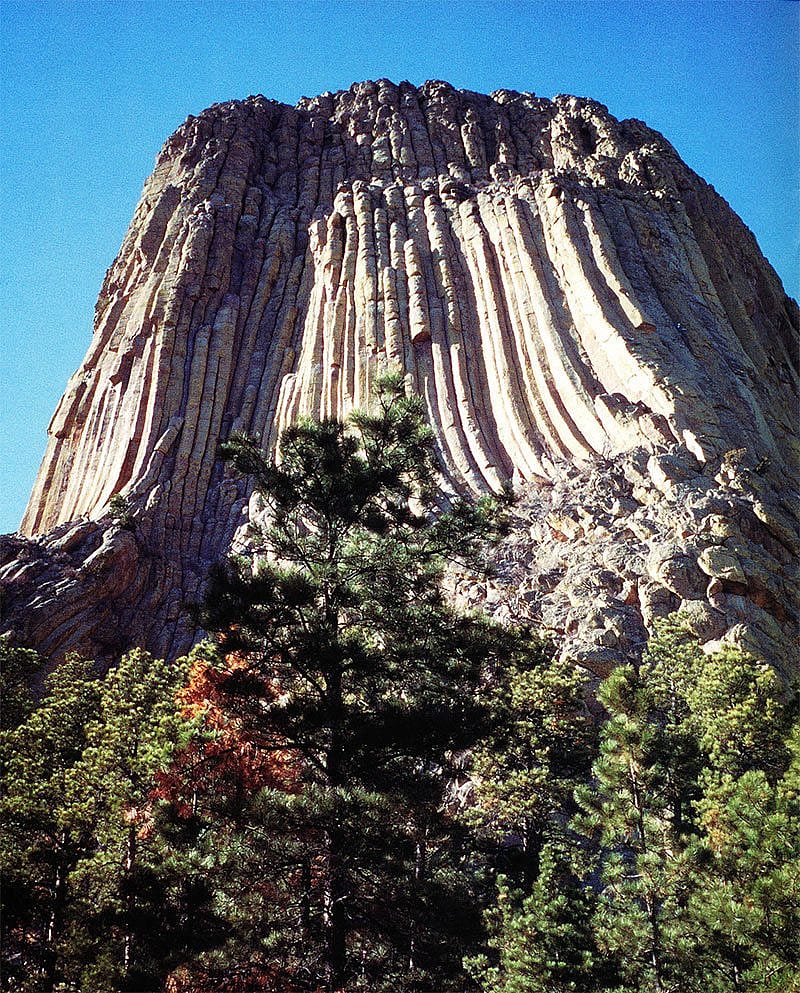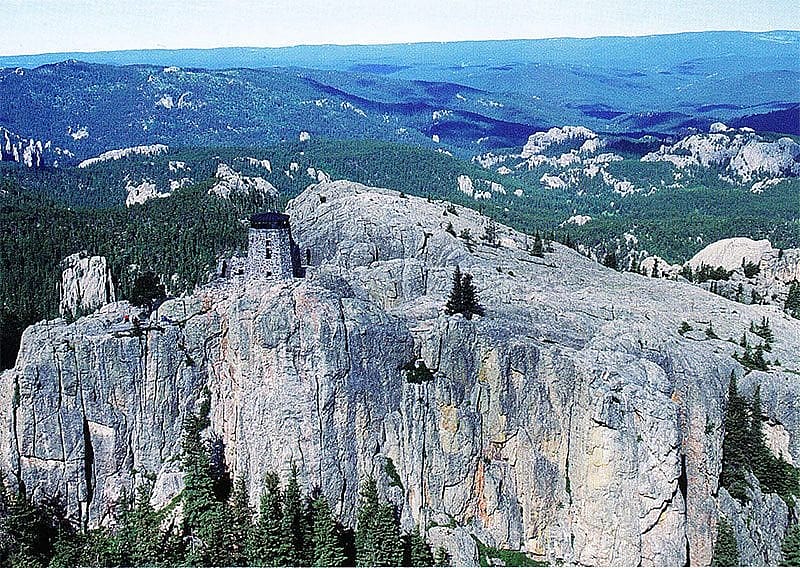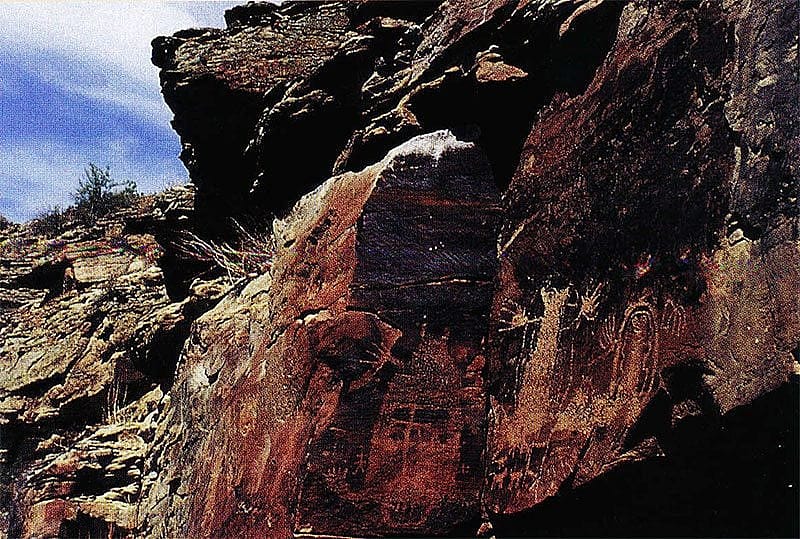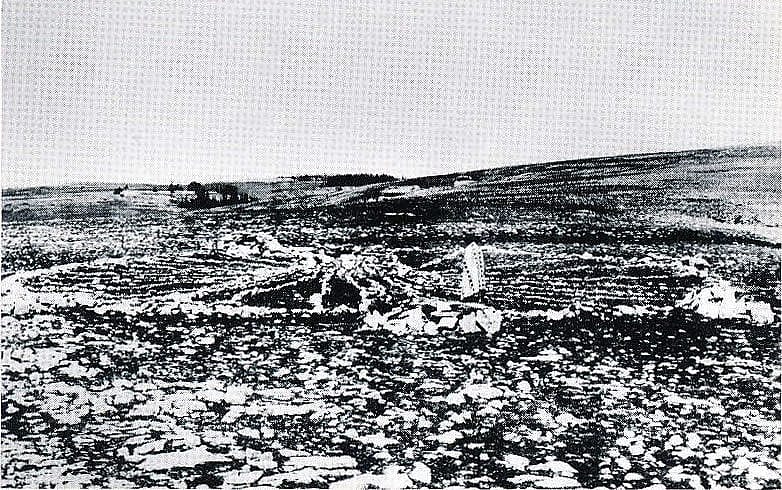
Sacred Lands – Points West Online
Originally published in Points West magazine
Summer 2000
Sacred Lands
By Emma I. Hansen
Curator Emerita, Plains Indian Museum
“East of my grandmother’s house the sun rises out of the plain. Once in his life a man ought to concentrate his mind upon the remembered earth, I believe. He ought to give himself up to a particular landscape in his experience, to look at it from as many angles as he can, to wonder about it, to dwell upon it. He ought to imagine that he touches it with his hands at every season and listen to the sounds that are made upon it. He ought to imagine the creatures there and all the faintest motions of the wind. He ought to recollect the glare of noon and all the colors of the dawn and dusk.” 1
In this passage, renowned Kiowa author N. Scott Momaday provides a glimpse of the strong aesthetic and spiritual connections that have tied Native people to their traditional homelands from generation to generation. Within the landscape of the Great Plains, Native people venerate certain places as inherently sacred sites from which cultural knowledge, beliefs, and traditions originated. Other locations where significant events occurred are sanctified as important elements of tribal histories and patrimonies. Such sacred lands have continuing and renewed importance to Native people of the Plains.
In the late 19th century as tribes were confined to reservations, missionaries and government agents worked together to banish traditional religious practices. In 1880, the Sun Dance was banned among the Plains tribes with threats of arrest of participants, followed by the prohibition of most other forms of Native spiritual traditions. Although many rituals were discontinued, Native traditionalists tried to hold on to their spiritual practices by conducting ceremonies in secret or changing their ceremonial calendar to conform to national and Christian holidays. Small groups of Native people sometimes were able to ravel to isolated sacred sites to renew their traditions without official notice.
In 1934 under the Indian Reorganization Act, Indian people were allowed religious freedom, and ceremonies once again openly took place under the direction of elders who remembered old tribal ways. Since the 1960s, Native spirituality and ceremonies experienced an incredible renewal as urban Indians returned to their homelands to find the vital links that tie them to their tribal past, and people living on reservations found new faith in traditional beliefs.
Under the American Indian Religious Freedom Act of 1978, Congress recognized its obligation “to protect and preserve for American Indians their inherent right of freedom to believe, express, and exercise their traditional religions.” This act, however, has failed to clarify the religious use of sacred sites on public lands as Plains tribal members have again found a spiritual foundation in the ceremonies described by Vine Deloria, Jr.:
“From time immemorial, Indian tribal Holy Men have gone into the high places, lakes, and isolated sanctuaries to pray, receive guidance from the Spirits, and train younger people in the ceremonies that constitute the spiritual life of the tribal community. In these ceremonies, medicine men represented the whole web of cosmic life in the continuing search for balance and harmony.” 2
Throughout the Plains, carved or painted images on rock, known as petroglyphs and pictographs, are located near rivers and streams, along cliff facings, and in caves. Consisting of abstract symbols and images of buffalo, elk, deer, bear, mountain sheep, eagles, humans, and powerful spiritual beings with horns or wings, these rock images document the ancient residence of Native people on the Plains. In the Wind River Mountains Wyoming, drawings of horned figures and other spiritual beings are found on rock outcroppings and along cliffs that can be reached only by climbing narrow ledges. Some of the drawings in these sites are attributed to the work of spiritual beings. The petroglyphs have continuing sacred importance to the Shoshone and other Native people of Wyoming, who respect and seek to preserve such sites.
Another ancient site in Wyoming, the Medicine Wheel, has been the subject of much research and speculation concerning its origins while remaining an important focus of Native spiritual life. According to the late Northern Cheyenne elder William Tallbull:
“To the Indigenous Peoples of North America, the archaeological sites on North American soil are not “archaeological” sites. They are sites where our relatives lived and carried out their lives. Sacred sites such as the Medicine Wheel are no different. To Native Americans they are living cultural sites from which help comes when “The People” needed or need help. They were/are places where tribal peoples went in times of famine and sickness, in periods of long drought when animals would leave, or in more current times when tribes politics, alcohol, or other abuses.” 3
The Medicine Wheel is built on a peak of the Big Horn Mountains at an elevation of 9,640 feet and consists of a stone circle about 90 feet in diameter with 28 spokes radiating from a central stone cairn with five smaller stone cairns along the periphery. For the Crow, Cheyenne, Sioux, Arapaho, Shoshone and other Northern Plains people, the Medicine Wheel is a holy place, a site of vision quests and peace talks where offerings of thanks are given and important ceremonies continue to be conducted.
Bear Lodge, known to non-lndians as Devil’s Tower, figures prominently in ancient Plains oral traditions. According to an Arikara story, a bear chased seven girls who were playing in the woods. The girls took refuge on a rock that grew into the sky beyond the reach of the bear. As the bear clawed the rock trying to reach the girls it left deep furrows. The girls themselves became the cluster of seven stars known as the Pleiades. Versions of this story are found among the Lakota, Blackfeet, Crow, Arapaho, and other Plains tribes. Bear Lodge is a sacred site for many traditionalists, who have traveled there for Sun Dances, vision quests, sweat lodge rituals, and to leave prayer bundles and offerings.
The Black Hills are the sacred lands of the Lakota, Dakota, Cheyenne and other Plains peoples. Lakota spiritual leader Pete Catches described the Black Hills in this way:
“To the Indian spiritual way of life, the Black Hills is the center of the Lakota people. There, ages ago, before Columbus trayeled over the sea, seven spirits came to the Black Hills. They selected that area, the beginning of sacredness to the Lakota people. Each spirit brought a gift to the Lakota people…Our people that have passed on, their spirits are contained in the Black Hills. This is why it is the center of the universe, and this is why it is sacred to the Oglala Sioux. In this life and the Iife hereafter, the two are together.” 4
Within the Black Hills are many sacred places including Bear Butte. Like other sacred mountains and high holy places, Native people visit Bear Butte for peace and solitude to induce spiritual reflections through vision quests. For the Cheyenne, Bear Butte is the source of the four sacred arrows brought to the people by the prophet Sweet Medicine. For the Lakota, Bear Butte is the site where the original instructions of life were given to the people. The highest point in the Black Hills and one of the most sacred to the Lakota is Harney Peak. Here, the holy man Black Elk had his famous vision and referred to the mountain as the “center of the world.”
The Sweetgrass Hills of northern Montana also is a place for fasting and vision quests. Women continue to go into the hills to gather roots and plants for food and medicines. According to Blackfeet tribal member Curly Bear Wagner,”Our people camped outside of the hills because of the sacredness of the land. Women would go in there and gather roots…or they fast or hunt and they gather sweet pine or sweetgrass and they come out. In that way, the spirits are connecting with our people in there.”
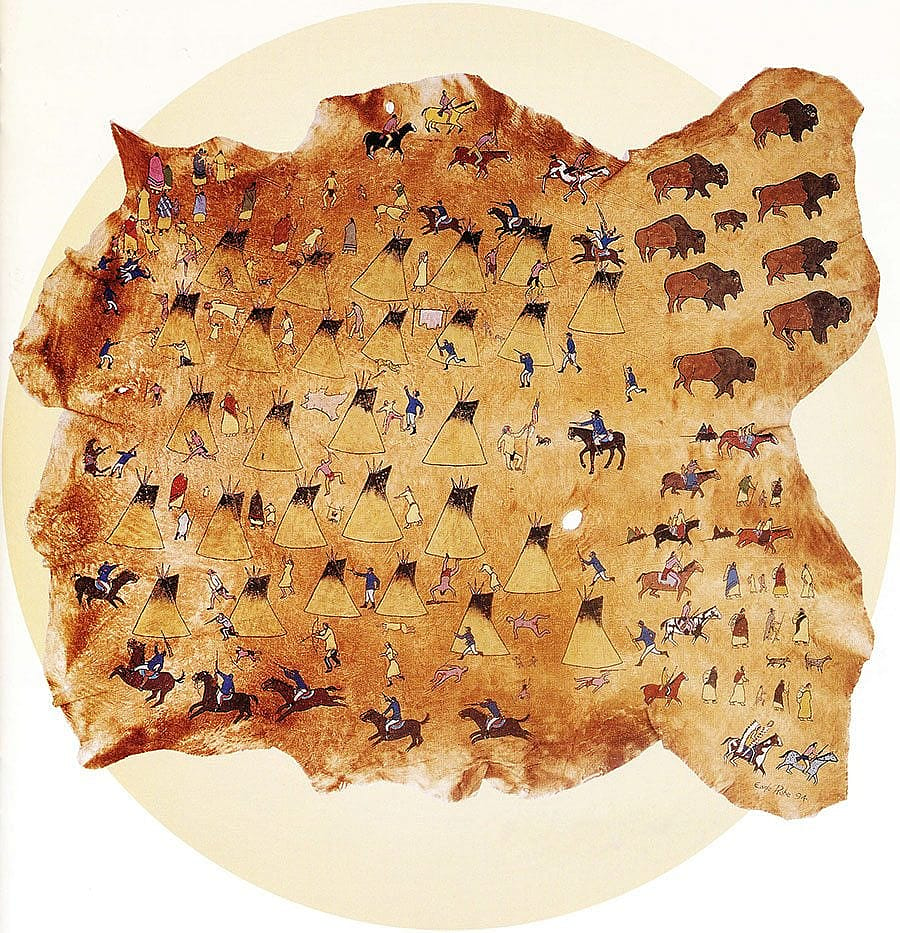
For the Native people of the Great Plains, the last half of the 19th century was marked by conflicts and losses of traditional ways of life—the buffalo, lands, and freedom. They remember and memorialize the struggles of their ancestors at Sand Creek, Washita, and Wounded Knee, places now sanctified because of those sacrifices. According to Vine Deloria, Jr., “Every society needs these kinds of sacred places because they help to instill a sense of social cohesion in the people and remind them of the passage of generations that have brought them to the present. A society that cannot remember and honor its past is in peril of losing its soul.” 5
Native people seek to respect and preserve such sacred places located throughout the Northern Plains. In the past, such sites were naturally protected because of their isolation. In recent years, however, commercial enterprises, recreation, and tourism have moved into even the most isolated areas of the plains. Compromises that allow the sacred and secular use of the lands are being worked out in legal and governmental arenas. Spiritual leaders such as William Tallbull have asked for public understanding of the significance of sacred places: “lf you go to see a Sacred Site, remember you are walking on ‘holy ground,’ and we ask that you respect our culture and traditions. If you come to a site that is being used for a religious purpose, we hope you will understand.” 6
Notes
1. N. Scott Momaday, The Way to Rainy Mountain (Albuquerque: University of New Mexico Press), 1969, P.83.
2. Vine Deloria, Jr. “Sacred Lands,” Winds of Change 8(4), 1991, p. 31.
3. Quoted in David Hurst Thomas, Exploring Ancient Native America: An Archaeological Guide (New York: Macmillan), 1994, p.238.
4. Quoted in Mario Gonzalez, “The Black Hills: The Sacred Land of the Lakota and Tsistsistas,” Cultural Survival Quarterly, Winter, 1996, p. 67.
5. Deloria, God Is Red, p. 272.
6. Thomas, Exploring Ancient Native America, p.238.
Post 030
Written By
Nancy McClure
Nancy now does Grants & Foundations Relations for the Center of the West's Development Department, but was formerly the Content Producer for the Center's Public Relations Department, where her work included writing and updating website content, publicizing events, copy editing, working with images, and producing the e-newsletter Western Wire. Her current job is seeking and applying for funding from government grants and private foundations. In her spare time, Nancy enjoys photography, reading, flower gardening, and playing the flute.
